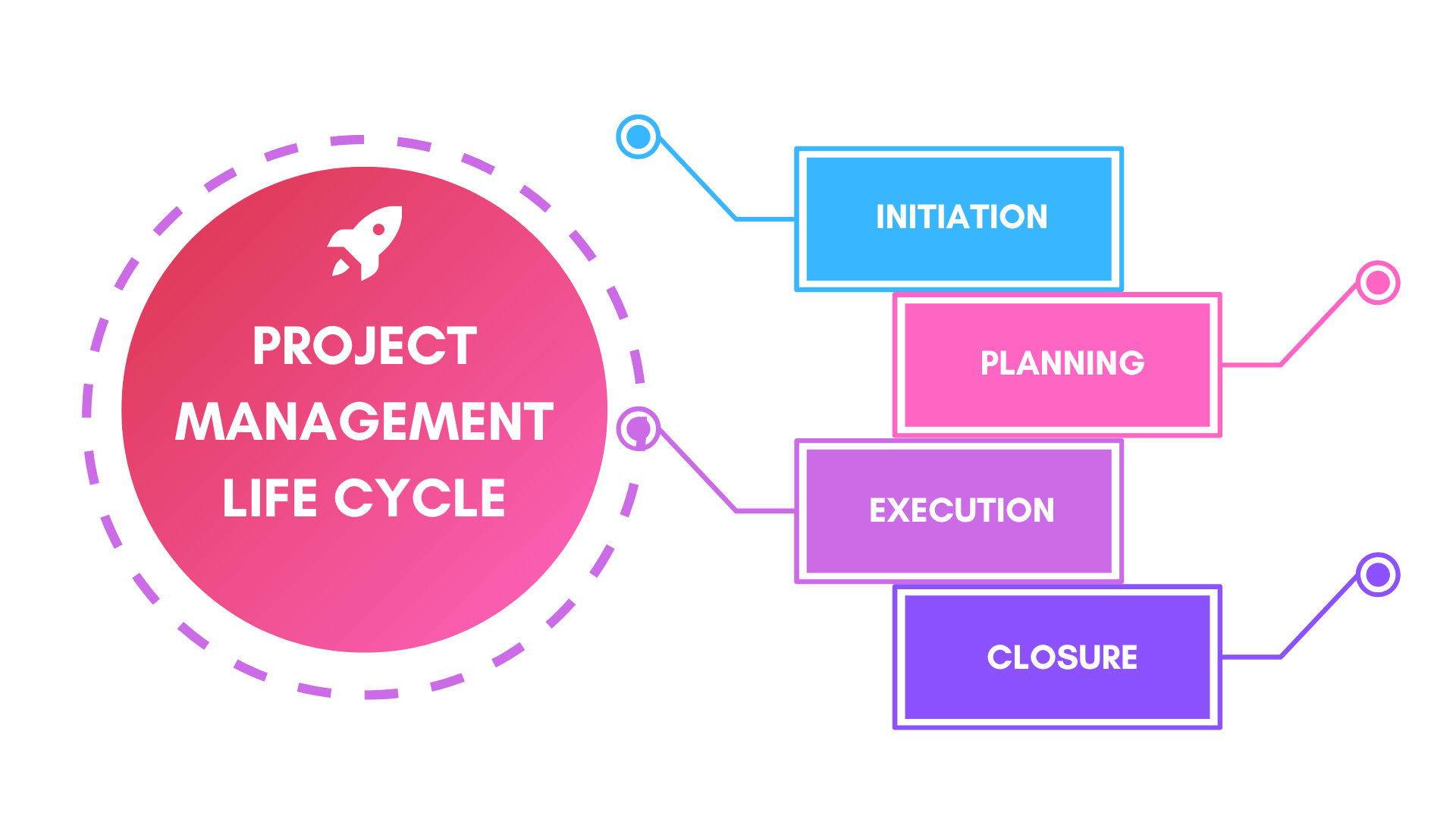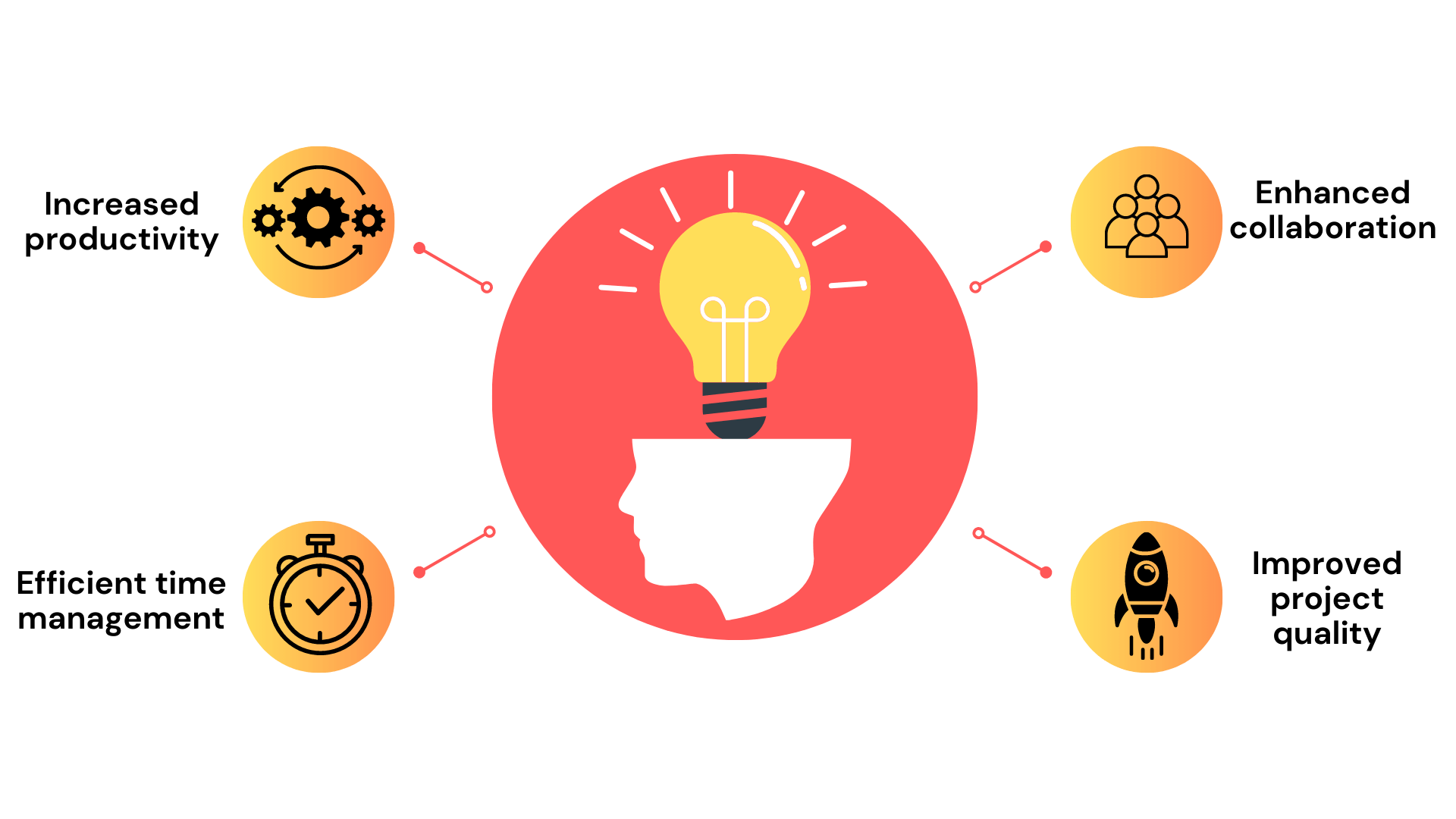
Home »
How KEBS Can Help You Streamline Project Management Process?
Discover how KEBS revolutionizes project management with its powerful tools and strategies.
Overview of project management?
It is the process of planning, organising, and managing resources to accomplish project goals within a predetermined timetable and budget. To successfully execute a project, it entails organising individuals, groups, and resources. This role involves many tasks. These include:
- Setting project objectives
- Determining the project’s scope
- Creating a project plan
- Assigning resources
- Scheduling work
- Managing risks
- Keeping track of development
- Delivering Projects on time
What is project management software?
It is used to help teams and project managers with resource planning, organization, and management to complete project goals. It provides tools and features to help manage tasks, schedules, budgets, resources, and communication across the team.

Feature of Project Management software
In addition to Gantt charts and SCRUM methodology, some common features of includes:
- Task management allows team members to assign tasks, set deadlines, and track progress.
- Resource management enables managers to effectively manage team members, equipment, and budget allocations.
- Time tracking allows team members to track their time and managers to monitor progress.
- Collaboration and communication enables members to communicate, share documents, and work together.
- Reporting and analytics provides data to help managers assess progress, identify risks, and make data-driven decisions.
What is project management software used for?
The user can use the software to manage project details, such as client information, project goals, and relevant files. This program can help with project management. It can monitor tasks and their progress, create estimations and deadlines, allocate personnel, track materials and tools, and keep financial control.
Overall, this software helps managers and teams streamline their workflows, optimize resource allocation, and improve project outcomes. It is an essential tool for businesses of all sizes and industries that need to manage projects efficiently. Additionally, the software offers
- Managing Project Information
- Monitoring the Schedule & Finish of Tasks
- Developing Budgets and Timelines
- Planning and scheduling of employees
- Material and Equipment Management
- Management of costs
- Taking charge of the approval procedure
Roles and responsibilities of a project managers
A project manager’s responsibilities vary depending on the project, organisation, and industry. Generally, these can include:
- Planning and defining project scope, goals, and objectives.
- Creating a detailed project plan, including timelines, tasks, and resources needed.
- Assigning tasks and responsibilities to team members and ensuring they are completed on time and within budget.
- Managing project risks and issues and developing contingency plans.
- Monitoring project progress and performance against the project plan and adjusting the plan as necessary.

- Communicating with stakeholders, including team members, clients, and senior management, to provide project updates and resolve any issues.
- Managing project budgets and ensuring that projects are completed within the allocated budget.
- Ensuring quality standards are met and deliverables are of a high standard.
- Simplifying team meetings and ensuring collaboration and communication among team members.
- Conducting regular performance reviews for team members and providing feedback to help them improve their performance.
What is the project management life cycle?
The project management life cycle refers to the series of stages that a project goes through from the beginning to completion. The life cycle is typically broken down into four main phases:

- Origination: In this phase, the project is defined, the project team is assembled, and the manager is identified. The manager and team work together to define the project scope, objectives and goals.
- Planning: In this phase, the manager and team work on developing a detailed project plan. This plan outlines the approach to be taken, timelines, budgets, resources required, and any risks or constraints associated with the project.
- Execution: The project plan is implemented at this phase. The project team performs the tasks and activities needed to fulfill the project objectives. Once the Execution is complete, the project manager monitors progress, communicates with stakeholders, and manages any issues or changes that arise.
- Closure: The project is completed in the final phase. The project manager then reviews the project to evaluate its success, document any lessons learned, and provide recommendations for future projects.
| Project Phase | Explanation |
|---|---|
| Origination | Project definition, team assembly, and manager identification. Define project scope, objectives, and goals. |
| Planning | Develop a detailed project plan including approach, timelines, budgets, resources, risks, and constraints. |
| Execution | Implement project plan, perform tasks, monitor progress, communicate with stakeholders, and manage issues and changes. |
| Closure | Finalize project, evaluate success, document lessons learned, and provide recommendations for future projects. |
How does project management software improve the project lifecycle?
PM software can improve the project lifecycle in several ways:
- Planning and Scheduling: PM software allows project managers to create detailed plans, schedules, and timelines for the project. This helps ensure that all stakeholders are aware of the project’s goals, milestones, and deadlines.
- Resource Management: This software can help managers allocate resources effectively. This includes managing the availability and workload of team members, as well as the allocation of materials and equipment.
- Communication and Collaboration: This software allows for easy communication and collaboration among team members, stakeholders, and clients. This can include messaging, file sharing, and real-time updates on project progress.
- Risk Management: This software can help identify and mitigate project risks. It can also provide tools for managing unforeseen events or changes in project scope.
How to improve project performance?
This 8-step guide provides useful tips to improve project performance:
- Stay Focused on the Main Goal: Ask each team member how their work is contributing to the main goal.
- Improve Project Planning and Quality: Carefully plan the project before work starts, identify team members, and put in place systems.
- Stay in Touch with the Group More Often: Communicate and engage with the entire team often and use a collaboration tool.
- Maintain interaction with clients: Talk to customers more often, schedule regular meetings, and make them relevant and productive.
- Help Prioritize Team Members Tasks: Prioritize team members tasks, find out where they have any confusion about their tasks.
- Use Intuitive Time and Expense Technology: Use professional services software to manage finances, automate invoicing and contract details.
- Report Project Status Professionally: Include clients in Professional service automation (PSA) software for consistent reports.
- Learn from past projects: Take time to reflect on past projects and identify lessons learned. Use these insights to improve future projects and avoid making the same mistakes.
How to make the most of your project management system?
This 8-step guide provides useful tips to improve project performance:
- Stay Focused on the Main Goal: Ask each team member how their work is contributing to the main goal.
- Improve Project Planning and Quality: Carefully plan the project before work starts, identify team members, and put in place systems.
- Stay in Touch with the Group More Often: Communicate and engage with the entire team often and use a collaboration tool.
- Maintain interaction with clients: Talk to customers more often, schedule regular meetings, and make them relevant and productive.
- Help Prioritize Team Members Tasks: Prioritize team members tasks, find out where they have any confusion about their tasks.
- Use Intuitive Time and Expense Technology: Use professional services software to manage finances, automate invoicing and contract details.
- Report Project Status Professionally: Include clients in Professional service automation (PSA) software for consistent reports.
- Learn from past projects: Take time to reflect on past projects and identify lessons learned. Use these insights to improve future projects and avoid making the same mistakes.

Monitor the progress of your project regularly using the project management system. Make adjustments to plans and timelines if necessary. This will guarantee the successful completion of your project.
Collect and analyze data from the project management system to identify areas for improvement in team performance, processes, and communication.
Integrate your project management system with other business tools. Examples include accounting software, customer relationship management (CRM) tools, and marketing automation tools. This will streamline processes and increase efficiency.
Importance of streamlining project management processes
Streamlining project management processes is important for several reasons:
- Streamlining project management processes increases efficiency by reducing time and effort needed to complete tasks. By removing unnecessary steps or redundancies, projects can be completed more quickly and with fewer resources.
- Standardized project management processes guarantee consistency.
- Processes for project management that are effective assist in identifying and reducing risks. This makes it easier to identify prospective problems and create solutions.
- Streamlining project management processes can reduce costs by optimizing resource utilization and minimizing waste. Reduce the amount of time spent on non-value-added activities.
- Reduce rework and mistake rates. Enhance overall project efficiency.
| Benefits of Streamlining Project Management Processes | Description |
|---|---|
| Increased Efficiency | Reduces time and effort needed for tasks by eliminating unnecessary steps and redundancies. Projects are completed faster with fewer resources. |
| Consistency | Standardized processes ensure uniformity in project management approaches, leading to more predictable outcomes. |
| Risk Identification and Reduction | Effective processes help in identifying and mitigating risks, making it easier to anticipate issues and develop solutions. |
| Cost Reduction | Optimizes resource usage and minimizes waste, leading to lower project costs. Reduces time spent on non-value-added activities. |
Discussion of common challenges faced by project managers
Project managers face various challenges that can impact project success. Here are some of the most common challenges:
- Poor Communication: One of the major difficulties project managers encounter is poor communication, which might result in confusion, holdups, and disagreements.
- Scope Creep: It describes a situation where project requirements change and expand beyond the original scope. This can result in project delays and cost overruns.
- Resource Allocation: Managing resources, including staff, equipment, and materials, is another challenge. Without effective resource management, project managers may struggle to complete projects on time and within budget.
- Risk Management: Project managers must also identify and manage potential risks to the project. Without effective risk management, unexpected events can impact project timelines and budgets.
- Time Management: Time management is another challenge for project managers. They must manage project timelines, schedules, and deadlines while also dealing with unexpected delays and other issues.
- Budget Management: Managing project budgets is another challenge for project managers. They must allocate funds effectively, project accounting and ensure that the project remains within budget.
- Stakeholder Management: Project managers must also manage stakeholder expectations, communicate project progress, and resolve conflicts among stakeholders.
How KEBS project management helps to address the challenges?
KEBS project management can help address common challenges faced by project managers in several ways:
- Gantt Charts: Project managers can discover problems and modify deadlines by using the visual tracking system provided by KEBS project management. This feature can help address the challenge of managing project timelines.
- Task Management: By setting individual and team project milestones, KEBS project management helps to ensure timely completion of projects. This feature can help address the challenge of managing project tasks.
- Project Methodology: KEBS project management automates manual tasks, which saves time and allows project managers to focus on critical tasks. This feature can help address the challenge of managing project processes.
- Time Tracking: Project managers can benefit from KEBS project management’s precise time monitoring. This allows them to understand exactly how much time is being spent on each task. This feature can help address the challenge of managing project time.
- Issue Tracking: KEBS project management records issues and their solutions. This creates a comprehensive database. This database can be used to improve future projects. This feature can help address the challenge of managing project issues.

- Sprint Tracking: KEBS project management helps to plan and execute multiple projects with precision by making data-driven decisions. This feature can help address the challenge of managing multiple projects.
- Cost Management: KEBS project management helps to ensure timely completion of milestones with project-based timesheets. This feature can help address the challenge of managing project costs.
- Resource Collaboration: KEBS project management allows team members to brainstorm even while working remotely, which helps to deliver projects with perfection. This feature can help address the challenge of managing remote teams.
- Project Templates: KEBS project management offers ready-made project templates that can be used to complete projects swiftly. This feature can help address the challenge of managing project complexity.
Benefits of using KEBS for project management

Using KEBS for project management can provide several benefits, including:
- Improved project visibility: KEBS project management provides improved project visibility. Gantt charts provide a visual way to track progress. Project managers can monitor the status of each task and identify any bottlenecks.
- Increased productivity: KEBS project management helps project managers set individual and team project milestones to ensure timely completion of projects. It also automates manual tasks to free up time for critical ones. This leads to increased productivity and helps to make data-driven decisions.
- Efficient time management: Time management is also possible with KEBS project management. It includes time tracking features. These features help project managers accurately track time spent on each task. This makes it easier to manage deadlines and budgets.
- Enhanced collaboration: KEBS project management enables remote collaboration with its resource collaboration features. Team members can brainstorm and work together. This makes it simpler to deliver projects to perfection.
- Improved project quality: KEBS project management has issue tracking features. This allows project managers to document any issues that arise, along with their solutions. This creates a comprehensive database that can be used for future projects. The use of project templates also helps ensure swift completion of projects.

Conclusion
In conclusion, KEBS is a Purpose-Built Quote To Cash Solution For Tech Services. It also provides a variety of tools to help project managers manage their projects effectively. These tools include issue and sprint tracking, task and time tracking.
KEBS interfaces with well-known tools and provides an intuitive user interface. This makes it easier for project teams to collaborate and boosts their productivity.
Ready to streamline your project management processes with KEBS – The perfect PSA Solution? Contact us to know more and take your organization to the next level!









